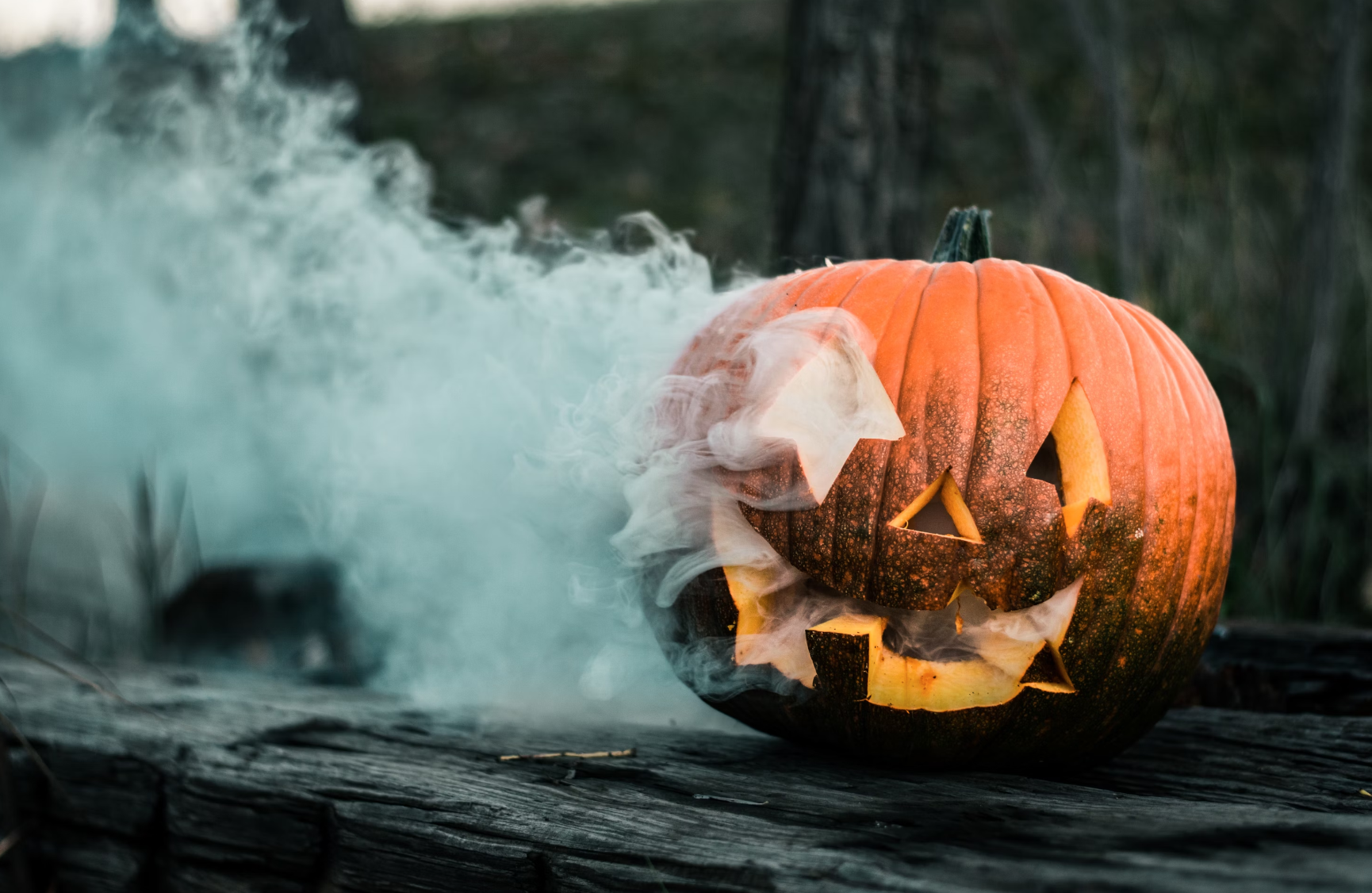Almost every neighborhood in America has that one house. The one that spends half their yearly income around October each year on turning their respectable three-bedroom, two-bathroom home into a portal to the underworld surrounded by Gothic-style ruins. The neatly manicured lawn has a cemetery with skeletons and zombies. The eaves have body parts dangling from them. Animatronic witches, werewolves, and vampires lurk in the rose bushes and along the sidewalk, daring intrepid trick-or-treaters to come to the door (usually covered in cobwebs) to claim their candy prize. For all the terror and theatrics, it better be a full-sized Snickers bar!
This largely American cultural phenomenon has been a part of every street I have ever lived on. As a kid, I saw it as an annual challenge to test my courage. As a parent now, these houses of horror haunt me with a more complex mix of feelings. Firstly, there is a bit of nostalgia, and, of course, I still enjoy candy. Secondly, I wonder if any of the explicitly gory items splattered on the property are triggering for people who have gone through physical trauma (much like fireworks triggering some military veterans on the 4th of July). A colleague of mine shared how a relative of hers was murdered via machete by a drug cartel in Mexico, and the sight of bloody blades, even plastic ones, is upsetting. Of course, I also recognize that part of the holiday involves people wanting to face life's ugly and frightening realities in a tangible way. Practically speaking, as a man with a mortgage and a busy schedule, I marvel at the amount of time and resources it takes to produce such spooky spectacles. Last year, I asked the owner of one of our local haunts how much time it took to set up. They told me that, in addition to the years it took to accumulate the graveyard, church ruins, life-size skeletal carriages with ghostly horses, and the hundreds of other elements embedded in their property, it took two solid weeks to set it all up. When I asked them why they commit to it yearly, they simply answered, “It brings the neighbors out and lets us meet people.”The ideas of connecting with our neighbors and the use of crumbly, macabre Halloween decor have an interesting relationship–one rooted in Christianity’s past. While researching the Gothic period for episodes on my podcast, I came across a curious bit of history that has affected the way I process all the terrifying trimmings that adorn my street each October.

The Ruins of Halloween
In his work, The Gothic: A Very Short Introduction, Nick Groom, chair of English at the University of Exeter, explores the origins of the Gothic aesthetic that has influenced Halloween decor. He writes, “If there is a signal moment in charting the Gothic through history, it comes with the English Reformation.”¹ This period of religious and political upheaval saw Protestants vying against Catholics for power and spiritual dominance. In the conflict, “[Catholic] leaders were executed, their members scattered, their libraries ransacked or lost, and, crucially, their abbeys and priories were pillaged and fell into ruin.”² The beheading of statues and destruction of wood and stonework littered the English landscape with ruins that provided an aesthetic backdrop that would help inspire elements of Gothic tales such as Dracula.
Want to dive deeper into big questions like life, death, and the supernatural? Our free courses—“Where on Earth Is Hell?”, “Can You Cheat Death?”, and “The World of Spirits”—explore what the Bible has to say about these topics. Get started today!
What’s more, during the Counter-reformation of the 16th century, Protestants developed a literary genre honoring their martyrs that contained all the gore and violence of modern horror novels. Finally, church art developed the memento mori (“remember to die”) tradition of depicting scenes of death to remind us our days are numbered (see Psalm 90:12-14). When I lead tours in England I often point out the winged skulls in the stonework of Christchurch Cathedral, or the skull and crossbones on graves at Holyrood Abbey. They are ruins of religious persecution masked as reformation.
So, what does this have to do with Halloween decorations, today? It is common for many Christians to wag their fingers and shake their heads at the homes decked out in death each year. However, in light of history, Halloween decorations remind me that Christians helped create the horrors we condemn in others. The decorations echo a violent past where people of different faiths practiced an intolerance that left people’s lives and landscapes in ruins. Just as frightening as any Halloween costume, was a lust for political power dressed up as a spiritual reformation.
Halloween is a complicated season with a dark, albeit complex, history. Some love it and some hate it. Some want to ignore it, condemn it, or use it as an opportunity to share hope. There’s a lot to consider and a lot to critique. Amid our ruminations, it’s vital to note that while we are not called to love Halloween, we are called to love our neighbor (Mark 12:30-31). Halloween’s devilish decor is a startling reminder to make sure we are not haunted by the same spirit that so easily makes ruins of the neighbors we are supposed to love. Even the ones who believe differently than we do. Even the ones with the creepiest house on the block.

¹Nick Groom, The Gothic: A Very Short Introduction (Oxford University Press, 2012), 52
²IbidSeth Pierce, Ph.D., is lead pastor of Sunnyside SDA Church in Portland, OR. and adjunct professor of religion at Walla Walla University. He has published numerous books and articles and is an active member of the American Academy of Religion. He hosts the Beast & Bible Podcast which is sponsored by Adventist Learning Community. The podcast explores the intersection of religion, monsters, and popular culture and is available on Apple, Google, and Spotify.




